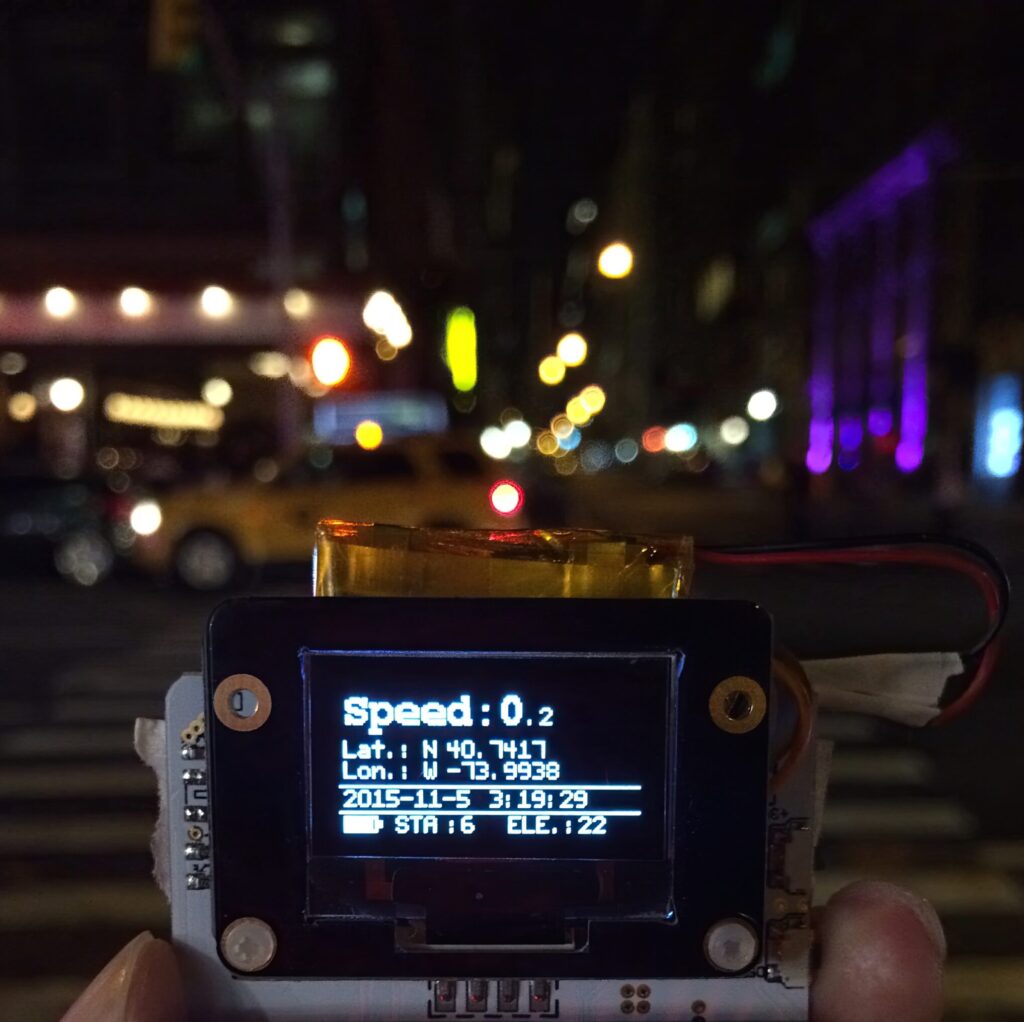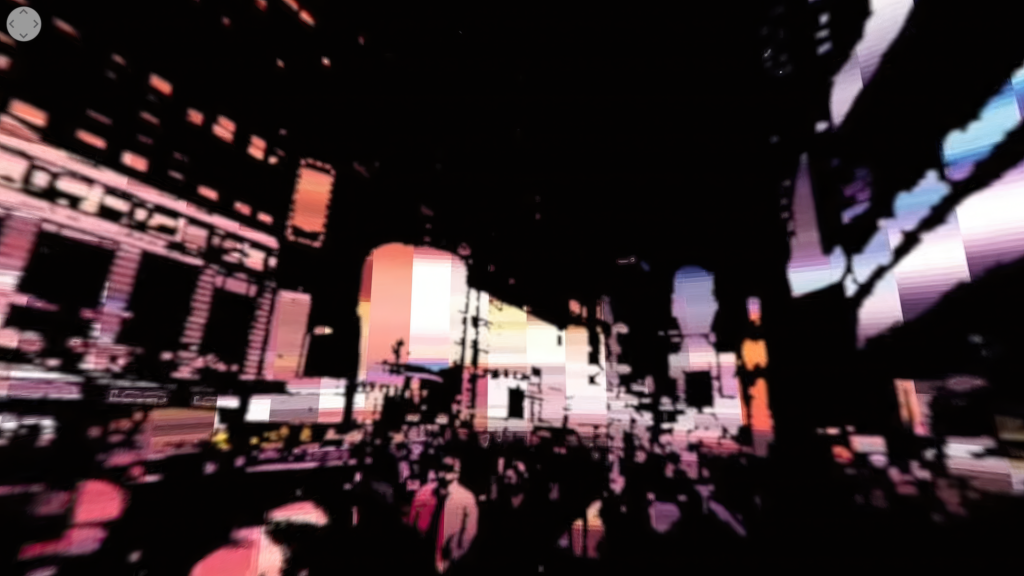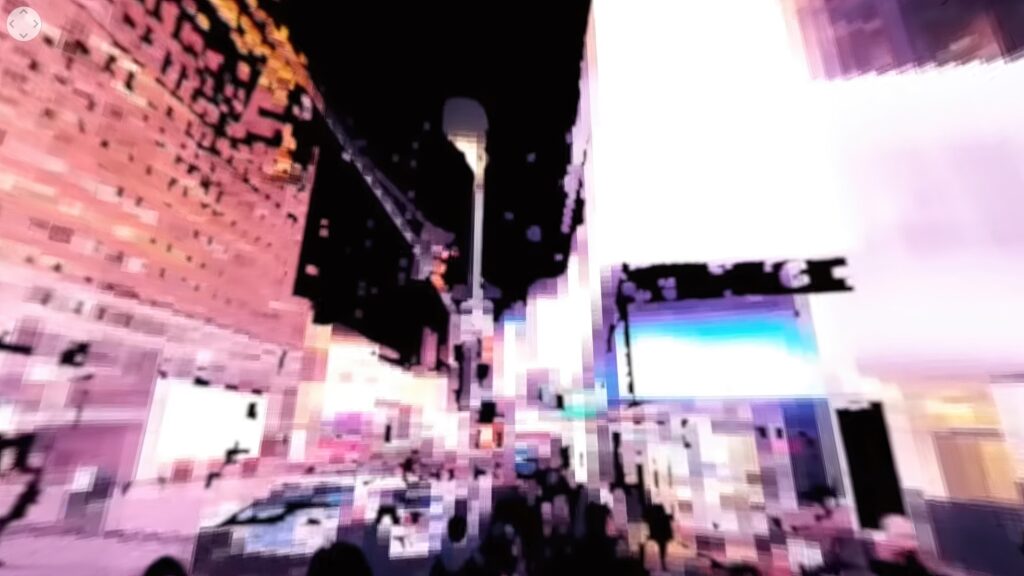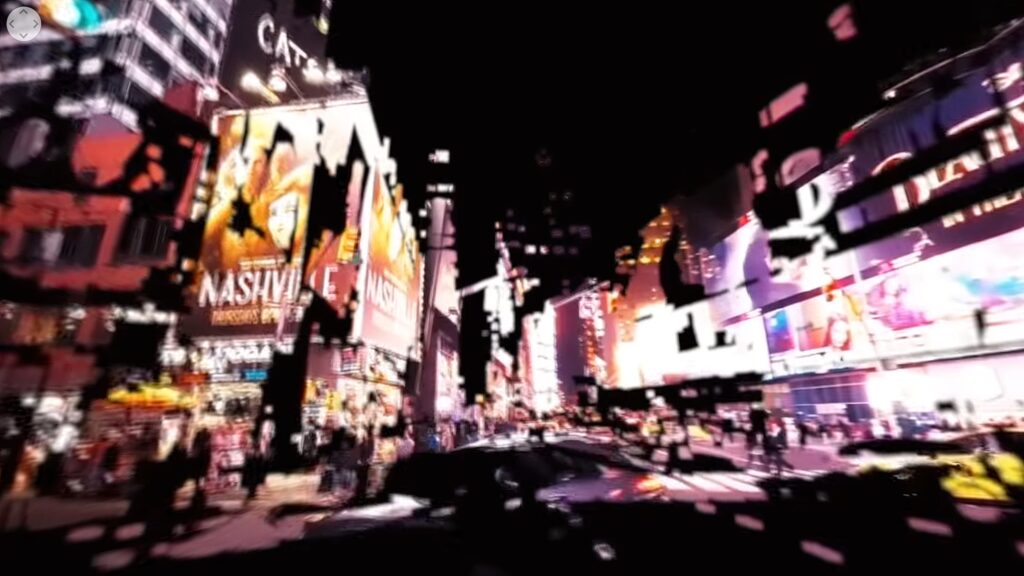Generative sound-image installation, 2016-2018
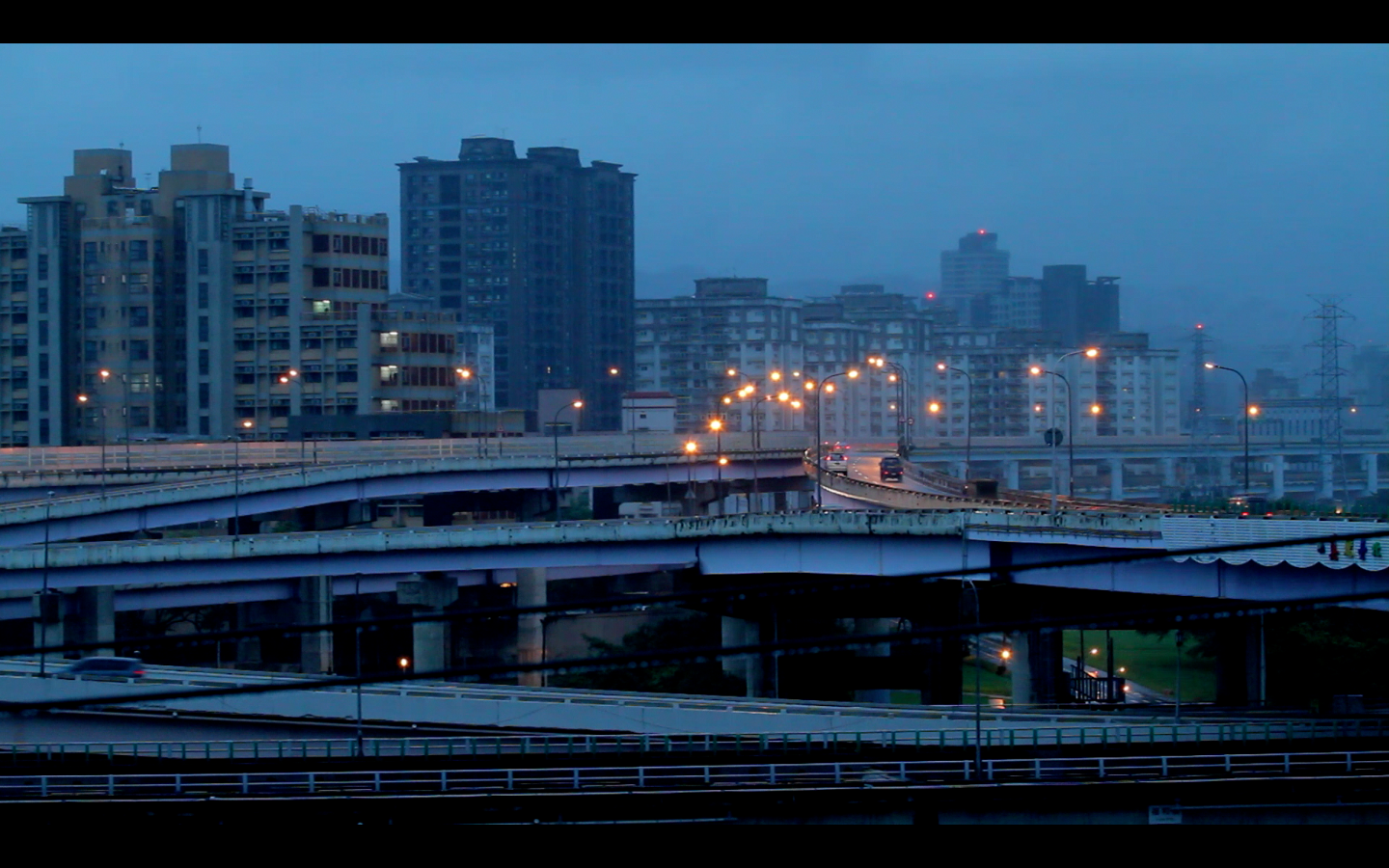
A Glimpse of Illuminated Streetlights in Taipei City, 2016
Project Description
Imagine walking through urban streets where flickering streetlights, illuminated buildings, and passing car headlights become part of a musical composition.
Lightscape is a research project that the artist has been conducting since 2015 in various cities, including Taipei, Hong Kong, and Gijón in Spain. The project transforms everyday artificial light sources and sounds in urban environments into a unique musical and auditory experience. This endeavor was inspired by Henri Lefebvre’s concepts of social rhythms and Jacques Attali’s binary perspective on noise and music.
From Lefebvre’s standpoint, urban life exhibits a complex but highly organized order. Streetlights, traffic lights, and the flow of vehicles all manifest this ordered state, each element operating within specific temporal and spatial frameworks. Although these systems may appear random, they are driven by broader social and cultural structures. This perspective aligns with Attali’s discourse on noise and music, emphasizing the transformation of what is typically perceived as disturbance or noise into a form of music rich in structure and meaning.
The artist employs interactive and generative technologies to analyze and correspond to these artificial light sources in the city, converting numerical values into generative parameters for music and soundscapes. This reflects the individual’s experience of navigating a city, capturing the rhythm and fluctuations of the surrounding lights and shadows. Scholar Emily Thompson has argued that urban environments, rather than natural settings, predominantly shape contemporary social landscapes. In this ever-changing and constructed urban milieu, Lightscape transforms elements often considered nuisances—such as glaring lights and noisy sounds—into phenomena with new significance and value. In achieving this transformation, Lightscape interprets social rhythms and structures, offering an alternative way to experience and understand our urban environment. Under an overarching concept, versatile in its execution, the ‘Lightscape’ project has been showcased in various settings and formats, adapting to the event’s specific thematic and presentation needs. For example, it has been realized as an immersive installation, a VR experience, a 360-degree video, a remote performance, or an interactive mobile program. At its core, Lightscape explores the dynamic relationship between individual agency and the surrounding environment.
Participants navigate urban environments while adhering to a predefined set of rules. This interaction leads to co-creating musical compositions that incorporate various elements of the surroundings. In Lightscape, the rules can be likened to instruction-based scores or graphic notations that use mapped routes as performative guides. This framework allows participants to engage deeply with both the predictable and unpredictable aspects of urban life and its infrastructure. Furthermore, it transforms this multidimensional experience into a form of poetic expression.
計畫概述
想像一下,走在城市街頭,路燈閃爍、樓房照明,或是經過的汽車頭燈都變成了一首歌的一部分。
《光景》是藝術家自2015年起,在台北、香港,以及西班牙的希宏等多個城市進行的現地研究項目,將日常生活中的人造光源及聲音轉變為一種獨特的音樂和聲響體驗。
此項目受 Henri Lefebvre 關於社會節奏以及 Jacques Attali 對噪音和音樂的二元對立觀點的啟發。從 Lefebvre 的角度來看,都會生活展示了一種複雜但高度組織的秩序。路燈、交通燈、車流等都是這種秩序的表現,每個元素都在特定的時間和空間中有其功能和節奏。儘管這些系統可能看似隨機,實際上它們是由更廣泛的社會和文化結構所驅動。這個觀點與 Attali 對噪音和音樂的論述呼應,強調如何將通常被認為是干擾或噪音的元素,轉化為一種富有結構和意義的音樂形式。
藝術家運用互動和生成技術對這些城市中的人造光源進行分析及對應,將數值轉換為音樂和聲響的生成參數,反映個人在城市移動經驗中,周遭光影的節奏與起伏。學者 Emily Thompson 曾指出,當代的社會景觀大多由都市環境塑造。在這個由不斷變動和建構的都市環境中,《光景》將常被視為困擾的元素—如刺眼的光線和吵雜的聲音—賦予新的意義和價值。通過這種方式,《光景》成為一種對都市生活和社會建構的深刻註解。
此計畫曾以多種因地制宜的形式在不同地點及活動中呈現,如沈浸式聲光裝置、虛擬實境、360影片、遠端同步演出、行動裝置應用等。
《光景》核心探討的是個人自主性與周遭環境間的動態關係。參與者在事先設定好的規則框架下進行城市探索,與外部環境一同構築出音樂作品。這些規則可視為一種指令譜,或是利用地圖路線作為演出指導的圖像譜。這種結構使參與者得以重新感知城市生活中各種可預測和不可預測的面向(包括其複雜的基礎設施)。
Chromatic Nocturne
Multichannel installation, LEDs, generative sound and images, 2016
- Routes on maps as a compositional element.
- GPS Sensor for navigating in the city.
Chromatic Nocturne is a multichannel, sound-light installation concerning the regulation and digitization of our daily lives. This generative audio-visual system transformed the orderly lights on the street into harmonious resonances. The light and the sound, masking each other, serve as the basis for visual and aural interaction manifesting in videos and installations. LABoral Center Official Event Page

Lightscape: installation at Laboral Centro de Arte, Gijon, 2016
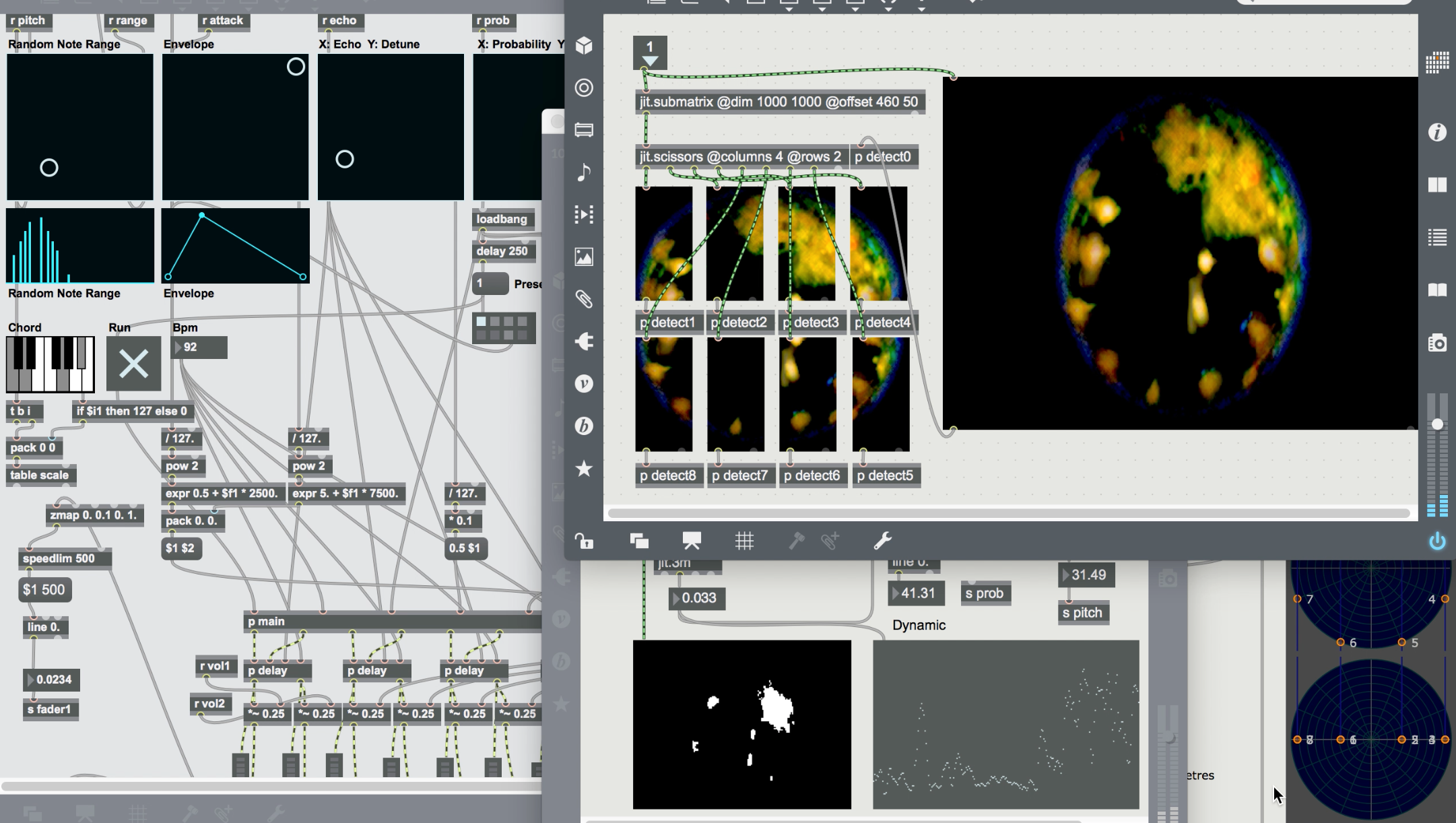
Generative Program Screenshot
Masquerade
360 video, generative sound, and images, 2017
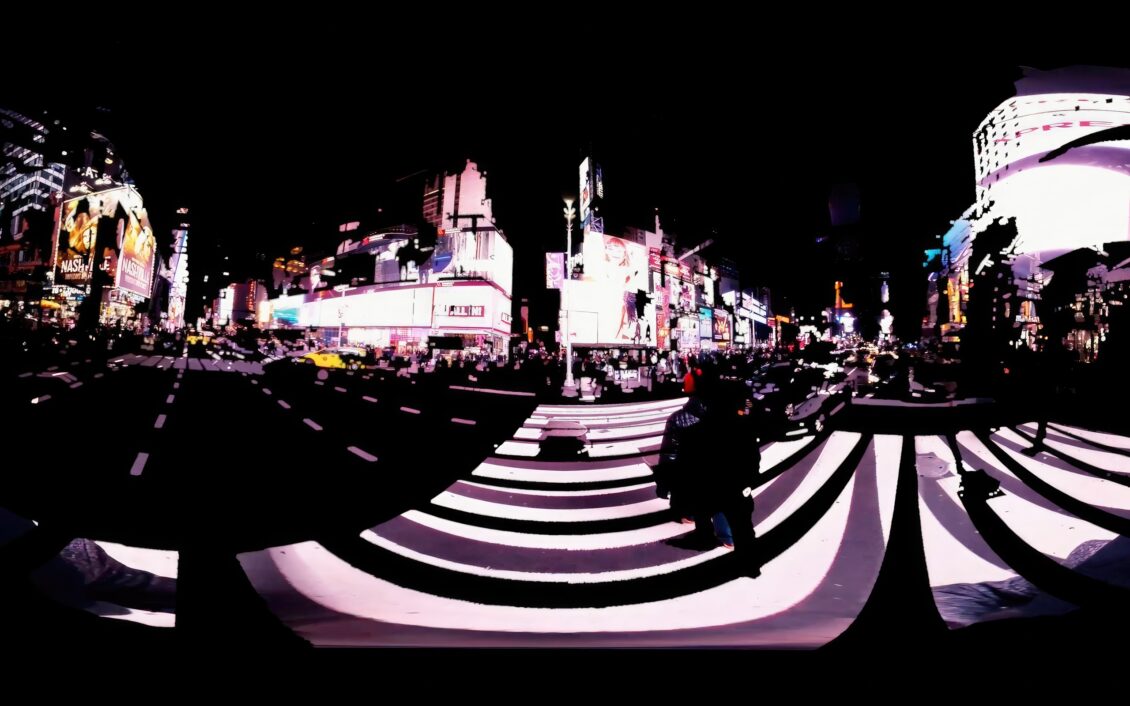
- Screenshots from the exhibition presented at the Sound and Music Computing Conference.
- It took place in 2017 at Aalto University in Finland.
Masquerade is the VR version of the Lightscape project, shot at Times Square in New York with recorded visual impacts from massive numbers of screens, lights, advertisements, and moving crowds. The bustling lights in the panoramic video signified, masked, and emphasized the illusory nature of time, place, and social characters. This project focuses on the complex intersection of sites, lights, and sounds represented in the urban ‘sites’ of visual cultures and associated discourse. One should reinterpret the causal relationship between the city’s environment and its citizens. Simultaneously, there is a blurred distinction: comprehending whether people live in the city or have been surrounded, even consumed, by the city.
Routine
3-channel video, 6-channel audio, 2016
Three videos of Harmonising, Recurrence, and Sparkling are included in Routine, which is composed mainly of nighttime footage of Taipei and some footage from Spain.
Lightscape Taipei 光景台北
Generative sound-images, projection, TVs, 2016
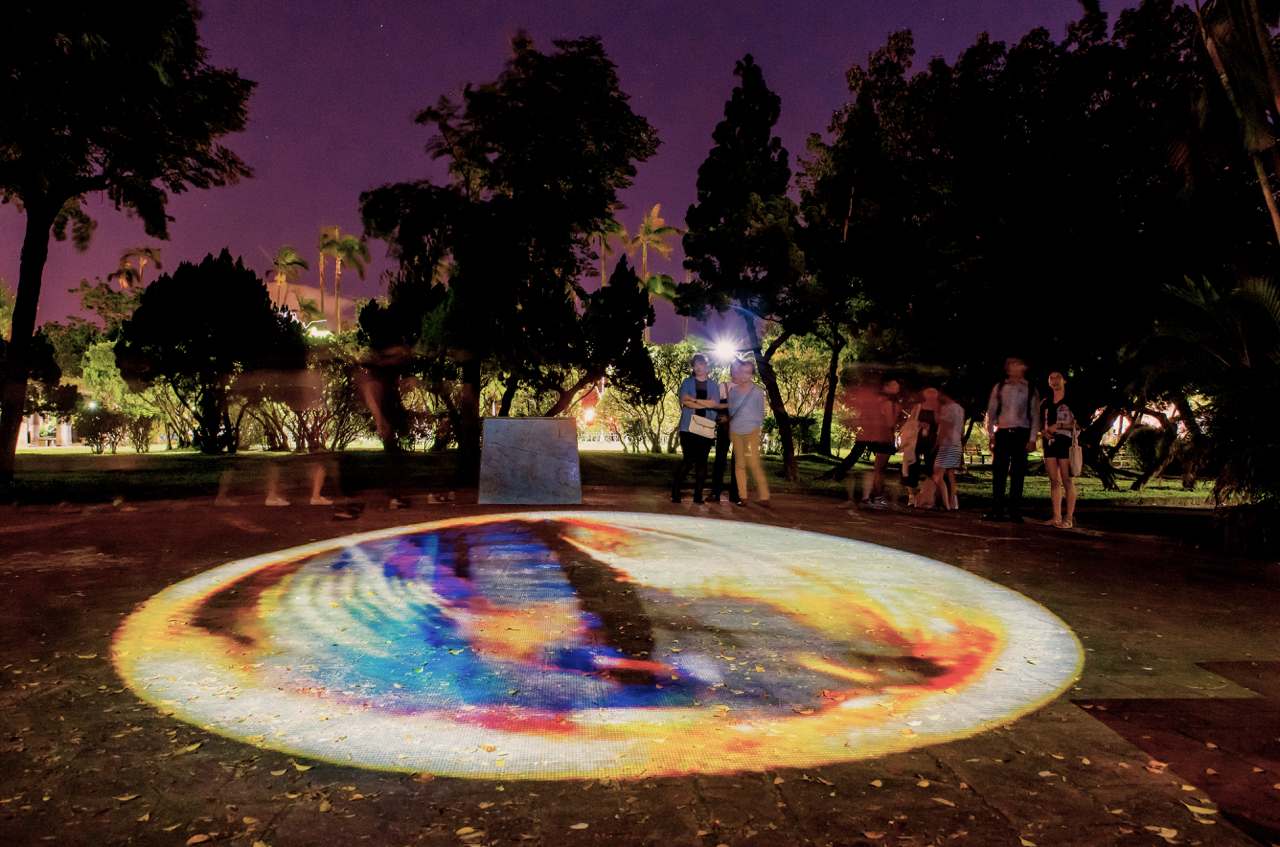
Nuit Blanche Taipei: installation at 228 Peace Memorial Park, Taiwan, 2016
In 2016, I participated in Nuit Blanche Taipei and showcased my work in the 228 Peace Memorial Park. Utilizing large-scale ground projections complemented by multiple television installations, I presented a modern-day lightscape of the old Taipei area. This project was my inaugural attempt at site-specific development, and it laid the groundwork for subsequent iterations involving enhanced sensory input, documentation, and translation through various software tools and processes.


